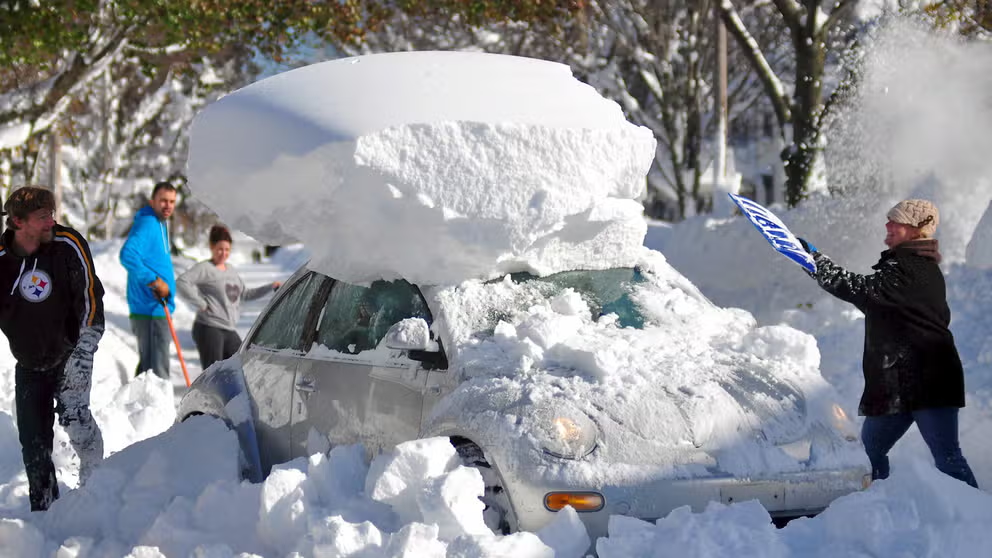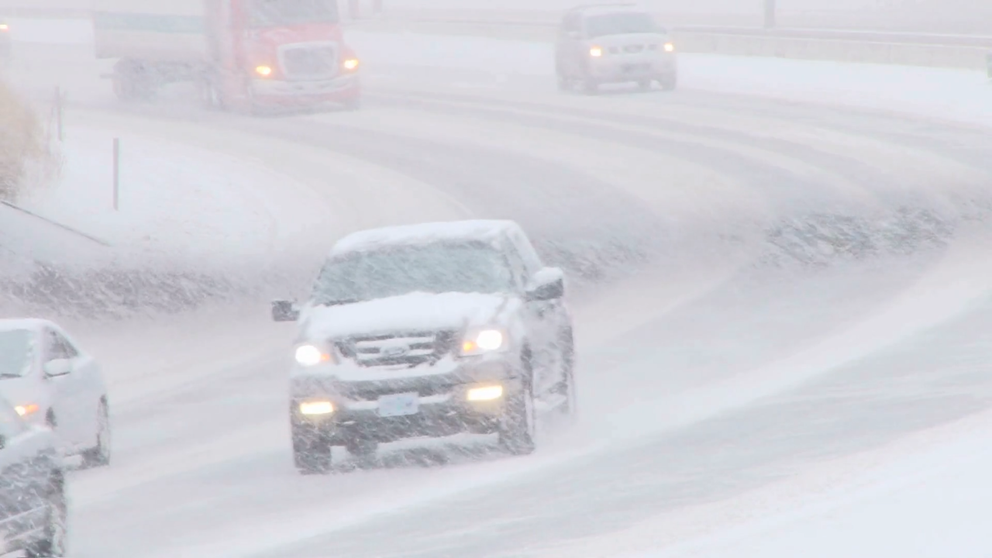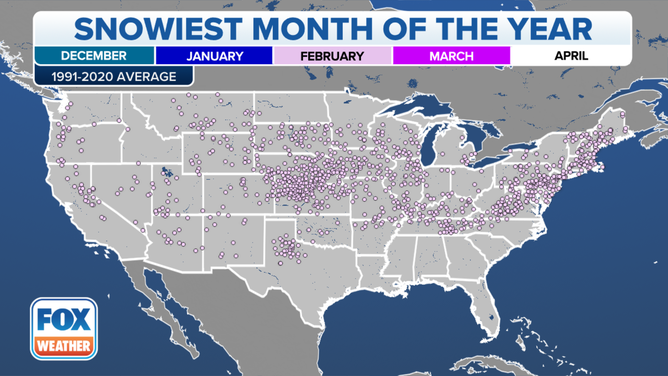April is surprisingly the snowiest month of the year in these areas
Those living in the northern or central Rockies and adjacent High Plains see more snow in April than in any other month during an average year. In particular, the Black Hills of South Dakota is a region notorious for very late-season heavy snowstorms.
See the 7 snowiest cities in America
See the seven snowiest cities in the U.S. based on the most recent 30-year climatological averages.
While December and January are typically the snowiest months for most across the U.S., a few places in the country average their most snowfall as many others enjoy the warmth of spring.
Those living in the northern or central Rockies and adjacent High Plains see more snow in April than in any other month during an average year. In particular, the Black Hills of South Dakota is a region notorious for very late-season heavy snowstorms.
THESE ARE THE 7 SNOWIEST CITIES IN THE U.S.
Which month is snowiest?
Which month is snowiest? The short answer: It depends on where you live.
To be included in FOX Weather's analysis, a location must have recorded at least 20 years with measurable snow (0.1 inches or greater) in the 1991-2020 period, so that excluded much of the southern tier of the U.S. since snowfall there is relatively infrequent.
WHEN CAN YOU EXPECT THE LAST SNOW OF THE SEASON?
If you don't like the snow, we recommend not visiting Mount Rushmore, South Dakota, in April – its snowiest month, with an average of 12.4 inches of snow.
Residents of Lead, South Dakota, can also claim April as their snowiest month, averaging an astounding 29.2 inches over those 30 days.
WHICH IS THE SNOWIEST MONTH OF THE YEAR?
FOX Weather Winter Storm Specialist Tom Niziol pointed out on Twitter that Cheyenne, Wyoming, averages 11.3 inches of snow in April, making it the snowiest month of the year there. In Rapid City, South Dakota, an average of 10.1 inches of snow falls in April, surpassing March, the city's second-snowiest month.
This April will be no different as the FOX Forecast Center tracks a powerful coast-to-coast storm that could bring blizzard conditions to millions of people living in the northern Plains and Upper Midwest this week. The powerful winter storm could significantly impact travel before life-threatening wind chills enter the region in the wake of the blizzard.
Winter weather alerts stretch across the region, including an 800-mile swath of Blizzard Warnings from Wyoming to Minnesota. The National Weather Service warned the early-April blizzard could become the "biggest snowstorm of the year" for parts of the northern Plains.






